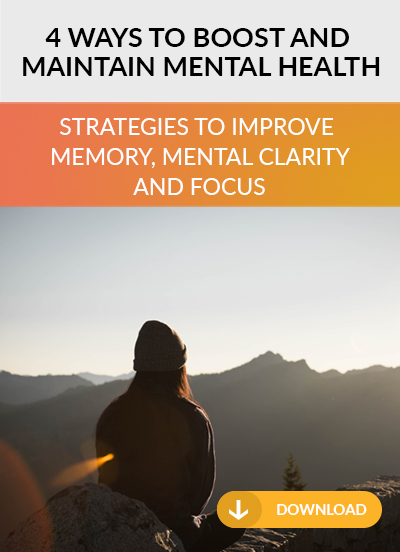Have you ever been told “your tests look fine” even though you still feel anxious, exhausted, foggy, or in pain?
You’re not alone.
Many people live with chronic symptoms that don’t show up on standard lab work.
Doctors may not find anything obviously wrong, but something still feels off in your body.
What if the issue isn’t in your bloodwork or organs, but in how your brain is processing the world around you?
There’s a part of your brain that acts like a built-in alarm system—always scanning for danger and trying to keep you safe. But sometimes, after an illness, trauma, or exposure to certain chemicals or infections, this system can get stuck in overdrive.
When that happens, your brain may start reacting to everyday situations as if they are threats. This can create a ripple effect throughout your body, affecting how you feel physically, mentally, and emotionally.
Doctors and health experts are now realizing that this hidden brain imbalance plays a major role in many chronic, hard-to-treat conditions.
A Simple Guide to Limbic System Dysfunction: What It Is and How You Can Heal
Your brain has a special area called the limbic system. This part helps control your emotions, memories, motivation, and how your body reacts to stress. It acts like an internal alarm system that helps keep you safe.
But sometimes, this alarm system becomes too sensitive. This can happen after a traumatic event, ongoing stress, exposure to mold or toxins, or even after an illness. When the limbic system gets stuck in “danger mode,” it can cause a wide range of symptoms in your body and mind.
Doctors and health experts are now realizing that this kind of brain imbalance—called limbic system dysfunction—plays a major role in many hard-to-treat chronic health conditions.
Understanding the Limbic System
The limbic system is made up of different parts of your brain that all work together. Some of the key parts include:
The amygdala, which detects danger and triggers emotional reactions like fear.
The hippocampus, which helps form and recall memories.
The hypothalamus, which controls things like sleep, hormones, and your stress response.
The thalamus, which helps process information from your senses.

These brain areas communicate with each other and with your nervous system to help you respond to your environment. When healthy, they help you stay balanced and calm. But if these circuits become overactive, your brain might react to harmless things—like a smell, noise, or food—as if they are dangerous.
What Causes Limbic System Dysfunction?
Limbic system dysfunction can be caused by many different things, including:
- Ongoing emotional stress or childhood trauma
- Head injuries or concussions
- Exposure to mold, chemicals, or pollution
- Infections like Lyme disease, Epstein-Barr virus, or COVID-19
- Gut problems like leaky gut or chronic inflammation
- Poor sleep or overstimulation from screens
All of these can confuse the limbic system and make it overly sensitive. This can lead to a constant “fight or flight” state, even when you’re safe.
Common Symptoms
When the limbic system is not working properly, it can affect nearly every part of your life. Some of the most common symptoms include:
- Anxiety, panic, or depression
- Brain fog, memory issues, and trouble concentrating
- Sensitivities to light, sound, smells, or chemicals
- Trouble sleeping or always feeling tired
- Muscle pain, headaches, or digestive issues
- Racing heart or feeling dizzy when standing up
- People with conditions like fibromyalgia, chronic fatigue, PTSD, or multiple chemical sensitivity often have signs of limbic system dysfunction.
Conditions Linked to Limbic System Dysfunction
Some chronic illnesses that are often connected to a malfunctioning limbic system include:
- Chronic Inflammatory Response Syndrome (CIRS), especially from mold exposure
- PTSD and emotional trauma
- Fibromyalgia and chronic fatigue syndrome
- Long COVID and other post-viral syndromes
- Anxiety and depression
- Mast cell activation and multiple chemical sensitivity
In these conditions, the limbic system becomes stuck in a loop, constantly reacting to small triggers as if they are life-threatening.
How Is It Diagnosed?
There is no single test to diagnose limbic system dysfunction. Instead, doctors often look at your symptoms and history. If you’ve had trauma, exposure to mold or infections, and now have symptoms that don’t show up clearly on blood tests or scans, limbic system dysfunction may be part of the puzzle.
Some health professionals use tools like symptom checklists, brain retraining questionnaires, or the Visual Contrast Sensitivity test. Functional lab tests might look at hormone levels, stress markers, or signs of inflammation.
Healing the Limbic System
The good news is that the limbic system can be retrained. Your brain is flexible, and with the right support, it can learn to calm down and feel safe again.
Some of the most helpful tools include:
Vagus nerve stimulation through deep breathing, cold exposure, gargling, or singing- which helps shift your body into a relaxed state- and low level laser therapy has proven to be very effective.
Nutrition and supplements to reduce brain inflammation and support healing—such as omega-3s, B vitamins, magnesium, and calming herbs like ashwagandha.
Detox and gut support if mold, toxins, or gut problems are contributing.
Lifestyle changes like spending time in nature, limiting screen time, and creating a safe, low-stimulation environment.
Hope for Recovery
Healing from limbic system dysfunction takes time, but it is absolutely possible! At ProActive Wellness we’ve helped individuals start feeling better within a few weeks of brain retraining. For others, it may take several months of consistent practice and support. So if what we’ve shared sounds like you and you’re wanting to “start living again” we’re here! Just give us a call!
The key is to gently teach your brain that you are safe. Over time, the alarm system calms down, and your body and mind can begin to recover. With patience and the right tools, you can heal and reclaim “the best performance of your life!”
God bless,
DrB
References:
retrainingthebrain.com/the-science-behind-dnrs/understanding-the-science
retrainingthebrain.com/news/what-is-limbic-system-impairment/
retrainingthebrain.com/the-science-behind-dnrs/understanding-the-science/
re-origin.com/articles/overcoming-limbic-system-dysfunction
retrainingthebrain.com/news/what-is-limbic-system-impairment
journals.physiology.org/doi/full/10.1152/physrev.00041.2006



